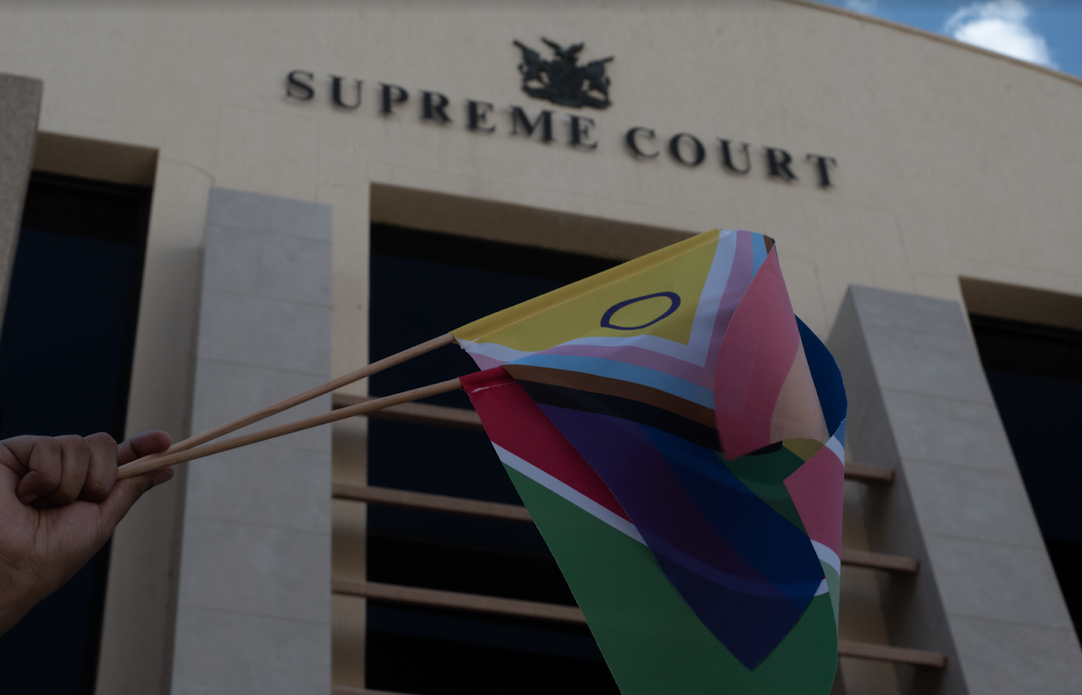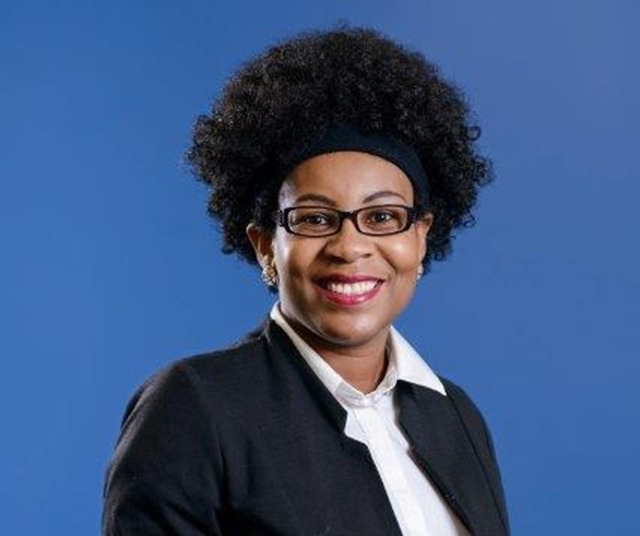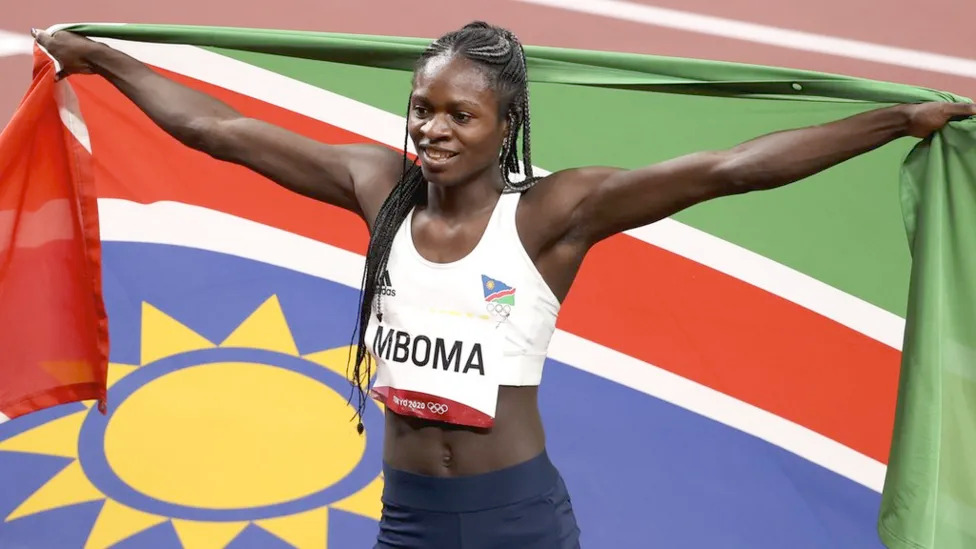• HILDEGARD TITUS
On 16 May, the Supreme Court in a landmark ruling recognised that same-sex marriages validly concluded outside Namibia are entitled to equality under the law.
While the lesbian, gay, bisexual, transgender, queer/questioning, intersex and other (LGBTQI+) community and human rights groups celebrated the ruling, some Namibians did not welcome it with joy.
The aftermath of the ruling has seen a rise in hate speech and calls to violence against the LGBTQI+ community made in some anti-gay marriage groups on WhatsApp, reportedly with over 3 000 members and counting.
One of the popular reasons some members cite in opposition to the ruling is that same-sex marriages are “un-African and un-Namibian” and do not “uphold Christian values”.
This is a contradiction, since Christianity is a western and colonial import to Namibia from the early 1800s by Finnish, British and German missionaries. Due to the rise of Christianity in Namibia, a lot of pre-colonial and pre-Christian beliefs, history and customs have been forgotten. One of those is the queer histories that have existed in Namibia, and continue to exist today, that reiterate that not only are the LGBTQI+ a part of Namibian society today, but they existed in all cultures before the introduction of colonial laws.
There is historical, anthropological and even linguistic evidence that queerness existed in Namibia before colonial indoctrination.
In terms of the gender binary and rigidity of language – many indigenous languages do not differentiate with pronouns/gender and also have words to describe gender-diverse identities dated pre colonial or western influence.
For the purpose of this article, the term ‘queer’ is used as an umbrella term for individuals whose sexual or gender identity does not fit into rigid heterosexual norms. This includes lesbian, gay, bisexual, transgender, intersex, asexual, non-binary, etc.
HISTORY OF QUEERNESS IN NAMIBIA
Stephen O Murray and Will Roscoe’s ‘Boy-Wives and Female Husbands: Studies in African Homosexualities’ details queer relationships in pre-colonial and early colonial Namibia. The book mentions the work of ethnologist Peter Kolb (1675-1726), who wrote about the Khoi-Khoin (sic) near the Kalahari in 1719, as well as anthropologist Kurt Falk, who shared his findings from the different groups of people who lived in the area we now know as Namibia in 1923.
Their travels throughout the region detail the different types of relationships that existed between people of the same sex across cultural groups.
PRE-COLONIAL TERMS FOR LGBTQI+ COMMUNITY IN NAMIBIA
Khoisan
Koetsire: Khoi Khoin (sic): Males who are sexually receptive to other men. Reported by Kolbe in 1719.
Soregus: A deep friendship that offers mutual assistance in economic matters but can also be used to form a homosexual relationship by young married women. Reported by Falk in the 1920s.
ôa-/huru, /huru: Mutual masturbation.
/goe-ugu, tribadie: Mutual masturbation between women.
Aawambo
esenge (plural. omasenge): Man possessed by female spirit, gender fluid shaman or someone who discovers and shares hidden knowledge through the aid of supernatural powers. During the contract labour system, there were instances where men would participate in same-sex intercourse due to being away from their wives for long periods of time.
Ovaherero
Okutunduka vanena: Term to describe anal intercourse.
Epanga: Term to describe lover.
Oupanga: Term to describe an erotic same-sex friendship.
Ovaherero woman would also make an artificial penis from a root that could only be made by an elder man who was no longer sexually active.
These are just the few terms and practices that were noted by Falk and Kolbe during their respective studies and travels. It is not an extensive one and there may be more instances in other Namibian cultures as well.
While the book goes into more detail about the different same-sex relationships that occurred both in pre-colonial Namibia as well as other parts of Africa, it acknowledges that it may not have been openly spoken about, however, it was an accepted part of most cultures, and as long as one didn’t perform it in public it was seen as part of life.
This is also because sex and sexual relationships were not moralised in the way they are today, particularly due to religious beliefs.
For example, with the omashenge who were shamans and diviners in different Aawambo groups, they would have been responsible for the spiritual well-being of their communities. So when Christianity was introduced, their sexual practices and religious practices were condemned and persecuted by missionaries, forcing many to abandon their previous religious beliefs.
The sodomy law is a colonial import of Roman-Dutch law, which was inherited through colonial and apartheid laws. Apartheid laws that, for example, marginalised the majority of the black population and prohibited interracial relationships.
THE BIRTH OF HETEROSEXUALITY: HOW COLONISATION SPREAD HOMOPHOBIA
To understand the ostracisation and vilification of those who engage in non-heterosexual relationships, we have to look at heterosexuality itself. Same-sex marriage is legal in 34 countries in the world. Ten countries in the world have capital punishment for those who engage in non-heterosexual relationships, and only five countries in the world have not been partially or completely colonised by a European country.
What is the connection with all these facts?
Most of the world has been colonised by Europe, and with it came cultural and colonial indoctrination.
This brings me to the next question, when did heterosexuality become a “cultural norm”?
The answer lies in Europe, and how their ideals, religions, and cultural “norms” were imposed on those they colonised, with those not conforming often severely punished.
Human beings have formed intimate and sexual relationships with those of the same sex and those of the opposite sex since the beginning of time. A BBC article by Brandon Ambrosino titled ‘The Invention of Heterosexuality’ explains how heterosexual relationships became the “norm” in the West.
Starting off with a definition of heterosexuality in 1901 from the Dorlan Medical Dictionary, at the time sexual intercourse between women and men was seen as necessary purely for procreation. Any excess or deviation which did not involve procreation was considered an “abnormal or perverted appetite toward the opposite sex”. In short, having sex for sex’s sake or for pleasure in a heterosexual relationship was viewed as perversion and abnormal.
In 1923, the Merriam-Webster Dictionary defined heterosexuality as “the morbid sexual passion for one of the opposite sex”. Again, enjoying sex a little too much with someone of the opposite sex was viewed as problematic and lustful.
In 1934, the term heterosexuality was changed to mean “manifestation of sexual passion for one of the opposite sex; normal sexuality”.
In just 30 years, the term heterosexuality went from being defined as abnormal, to normal, and thus we witnessed the birth of heterosexuality. Once you define one thing as normal, anything that deviates from that becomes abnormal.
Ambrosino’s article goes on to share a quote from Hanne Blank’s book ‘Straight: The Surprisingly Short History of Heterosexuality’, with an analogy from natural history that says: “Prior to 1868, there were no heterosexuals” because people weren’t obsessed on differentiating each other based on their sexual behaviours and sexual desires.
In short, sex was just a thing that people did. Like eating or breathing, but later religious and cultural rules dictated what sex acts were accepted, and which were not. Sex was essentially divided into two categories, one that was procreative and one that was not.
There was a time when masturbating was seen as “sinful” because it was wasting “the seed of life” or the possibility of creating new life.
People married and procreated for millennia, regardless of their sexual attractions, or romantic or emotional attractions. At the end of the day, all that most societies really cared about was that the line of humanity continued, and how you got there, and what you did in your spare time to please yourself didn’t really matter. Until the work of Austro-German psychiatrist Richard von Krafft-Ebing.
When Namibia and other parts of the world became colonised, colonialists also brought along their customs, rules and norms, however, the fact that precolonial terms and practices exist shows that homosexuality and queerness is not un-African, or un-Namibian, but an integral part of our history and culture.
What is un-African is the persecution that followed gender-diverse people due to the colonial laws and religious conservatism of European missionaries who arrived in Namibia.
While the majority of Namibians might follow Christianity, it is important to note that it is still a secular state, and above all our Constitution and laws are meant to protect the dignity and rights of each person living in Namibia, regardless of their faith or background.
It is important that we ask ourselves why we are more concerned about consensual same-sex relationships than other, more important, issues like the poverty, gender-based violence and corruption that plagues our country.
To be a free Namibia is to be an inclusive one, and part of inclusion is unlearning the false narratives and systems that former colonial powers have enforced on us.
Stay informed with The Namibian – your source for credible journalism. Get in-depth reporting and opinions for
only N$85 a month. Invest in journalism, invest in democracy –
Subscribe Now!






